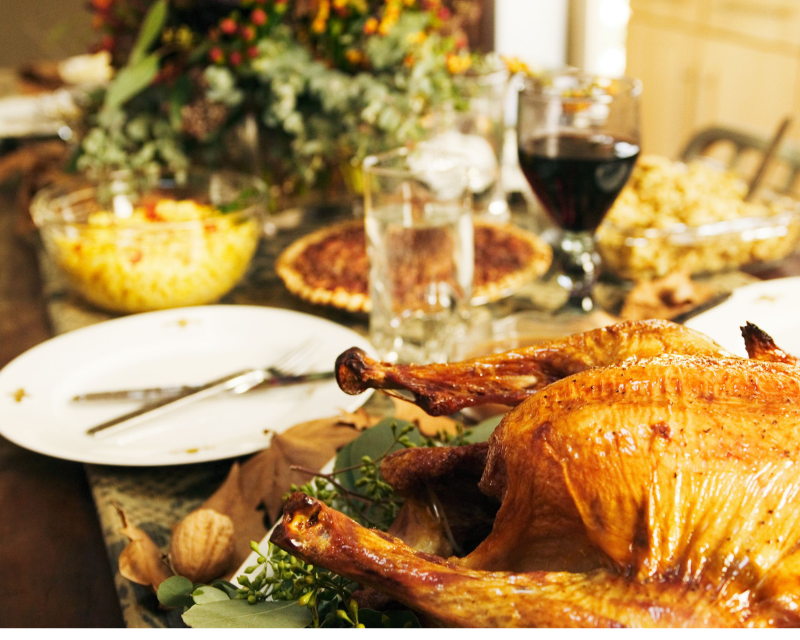Eating turkey and stuffing doesn’t have to leave you feeling like a stuffed turkey. Some simple tips can leave you satisfied with the feast without filling yourself to the gills.
More than any other holiday, Thanksgiving is about the meal. A typical turkey dinner can tally up about 3,000 calories and 150 grams of fat – or more – according to the Calorie Control Council.
Easy ways you can reduce calories while preparing
If you’re doing the cooking there’s some easy ways you can trim the tally without sacrificing enjoyment.
- Try using skim or 1% milk rather than 2% or whole.
- Sugar and butter can be reduced by half in most recipes without affecting the taste.
- Skim the fat off of the turkey drippings before using them to make gravy.
- Use fat-free evaporated milk instead of heavy whipping cream.
- For a la mode pies, use less whipped cream or try frozen yogurt instead of ice cream.
- Make baked apples as a dessert instead of apple pie for lower calories, sodium and sugar.
- If you’re serving party dips, offer a variety of vegetables rather than bread or crackers.
- Consider experimenting with a healthier version of a Thanksgiving side dish. It might become a family favorite.
- Clear the table - Avoid leaving leftovers out on the table or counter. It not only reduces grazing, it also eliminates a breeding ground for bacteria.
Tips to stay on the skinnier side of the scale.
If you’re not cooking and instead sitting down at your host’s table, you can still enjoy family, friends and feast without busting a gut. Try these tips to stay on the skinnier side of the scale.
- Don’t starve yourself - Eat breakfast. Getting those nutrients early, especially protein and fiber, helps you feel satisfied, which can help you avoid overeating later.
- Hydrate - Drink water and more water. Thanksgiving foods can be high in sodium and staying hydrated helps minimize or reduce bloating from those salty foods.
- Limit alcohol - Moderating your drinking reduces the number of empty calories you take in.
- Downsize - Using a smaller plate gives you the illusion that you’re eating more.
- Pick and choose - Before heaping helpings onto your plate, start with small portions to try. Then add what you like best. Don’t feel like you have to eat everything.
- Taste - Take a nibble before adding salt. You might not need it.
- Savor - Chew slowly and thoroughly. Take time to enjoy each mouthful of food.
- Socialize - Put your fork down and chat with your table mates.
- Split your dessert - Eat half on the holiday, and save half for the next day.
- Get moving - Before or after dinner, take a walk, play some backyard football, shoot hoops, create your own game or have a dance party.
If you do blow your diet, don’t despair. One day of holiday eating can be overcome. Studies show most people gain one to two pounds during the holidays. The problem is those one to two pounds add up year after year. So if you’ve overindulged, add more exercise and some leaner meals in the following days.





